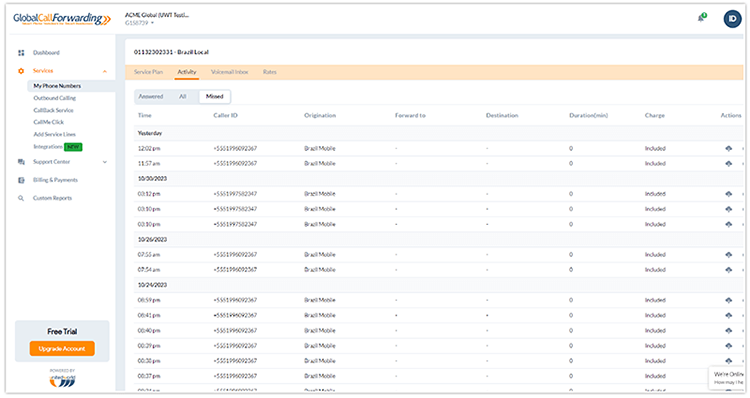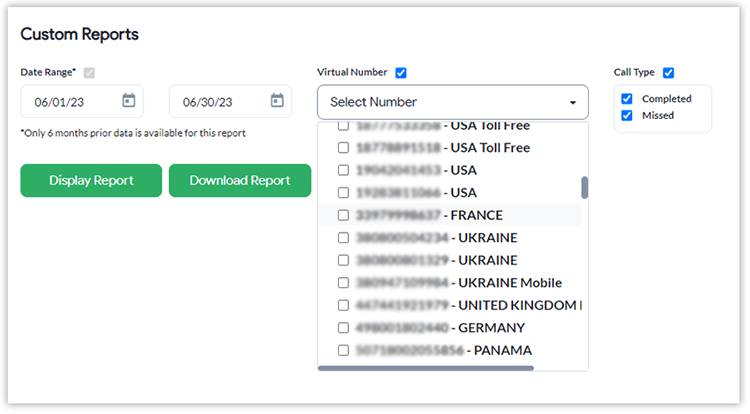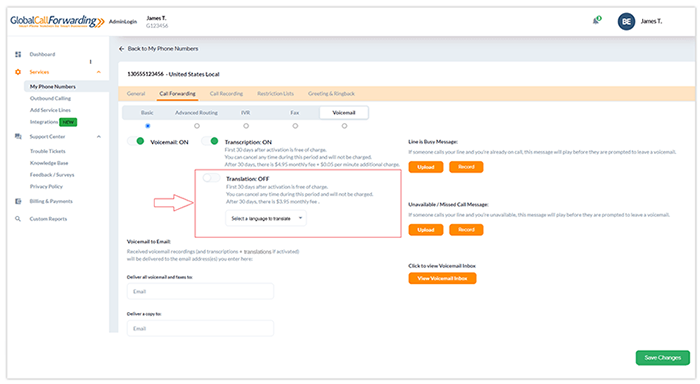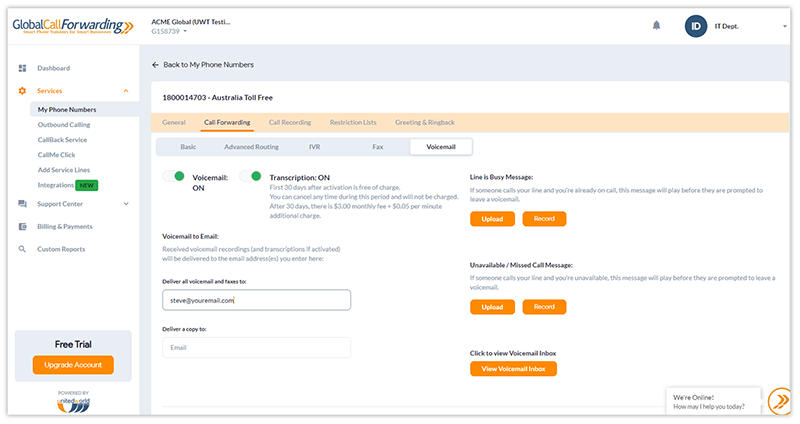Well-run businesses understand the importance of communication and accessibility. Whether communicating with customers, leads, or internally with employees, phone calls remain among the most effective ways to exchange information.
While researching global communications solutions for your business, you might have encountered Toll-Free FlexDial, a specific type of international toll-free number.
But why should your business opt for Toll-Free FlexDial instead of more traditional business phone number solutions?
This article will explore the prominent Toll-Free FlexDial use cases to help you understand how your business can benefit.
1. Toll-Free Solution for Countries That Do Not Offer Toll-Free Numbers
Our international toll-free coverage spans more than 160 countries, but there are certain countries where toll-free numbers do not exist.
The absence of toll-free numbers can be due to domestic turmoil, international sanctions, an underdeveloped telecommunications infrastructure, or other reasons. For example, in South Sudan, toll-free numbers simply do not exist.
So, how can your company still offer a toll-free point of phone contact in countries like South Sudan, where toll-free numbers don’t exist? Enter FlexDial.
Toll-Free FlexDial enables businesses to offer a free-to-dial phone number to callers in specific countries despite toll-free numbers not existing in those countries.
It works like so:
- Activate a “trigger” phone number from a neighboring country
- Specify the country where you would like to enable toll-free calls from
- Publish the phone number and distribute the number to your contacts in that country
- People from that country can dial the number free of charge, the call will end, and the caller will receive an immediate return call from your business.
FlexDial is the best solution to have a phone number that people can dial free of charge from countries where toll-free numbers do not exist. To view FlexDial plans for specific countries where traditional toll-free numbers are unavailable, head to our FlexDial pricing page.

2. A Single Toll-Free Number for All Countries
Through our decades of experience as a global telephony provider, many clients inquire about having a single phone number that people can dial for free anywhere worldwide.
They may have found our article about UIFN and thought it sounded like a viable solution. But in reality, UIFN is a limited service formulated many years ago and has yet to develop into an all-encompassing global toll-free number solution.
Only about 60 countries participate in the UIFN program, meaning people from the remaining countries worldwide cannot dial the number. Secondly, dialing conventions for UIFN vary across countries, which might cause some issues.
In cases like these, we recommend ITFS numbers or Toll-Free FlexDial.
ITFS numbers are the most conventional and straightforward solution for a business that needs toll-free numbers for different countries. However, people can only dial ITFS numbers from their respective countries. So, ITFS requires companies to advertise unique phone numbers for each country, defeating the objective of having a single phone number for multiple countries.
FlexDial, on the other hand, is a viable solution enabling businesses to have a single phone number that works in all countries worldwide. The company must choose a “trigger” phone number and allow worldwide coverage. People from all nations would be able to dial that trigger number free of charge and receive an immediate return call that is also free of charge. However, it’s important to note the callers would need to have international dialing capability enabled on their phones.
3. A Toll-Free Solution for Specific Regions
Another primary FlexDial use case is publishing a toll-free number for specific regions. FlexDial is particularly beneficial for businesses that operate in geographic areas where countries are closely linked economically or culturally but still maintain distinct telecommunications infrastructures, like in the GCC region.
Your business may need to offer a toll-free number for Europe, Asia, Latin America, parts of Africa, or the Middle East.
European toll-free numbers do exist in the form of UIFN and ITFS. UIFN covers most European countries and ITFS functions as individual country toll-free numbers.
However, UIFN coverage is limited throughout other regions globally. For example, there is no traditional toll-free number that people can dial free of charge from the Middle East or anywhere in Africa.
Businesses can set up ITFS numbers for specific countries in those regions, but people cannot dial those numbers from other countries. Alternatively, they can set up a local phone number from a prominent city in that region. Still, callers from other countries would incur international charges when calling that number.
FlexDial is a solid solution for having a single toll-free contact point for specific regions. For instance, a company could activate a single FlexDial number for the entire Middle East region or parts of Africa. FlexDial would enable people from those countries to reach that business on the same toll-free number without incurring international calling charges.
For this use case, we recommend using a trigger number from a prominent city in the region.
4. An Alternative to Bypass Complex Telecom Regulations
Another critical use case for Toll-Free FlexDial involves telecommunications compliance.
In some countries, local regulations or licensing requirements can make it difficult for foreign businesses to obtain traditional toll-free numbers. For example, your business might need an in-country company certificate and in-company proof of address to activate a toll-free number.
While we do our best to mitigate these regulatory matters, this can be a significant barrier to entry for companies looking to offer a telephone contact number in such markets.
Toll-Free FlexDial offers a workaround by providing an alternative means of offering toll-free calls to customers in these countries. By utilizing a trigger number from a neighboring country or a region with more accessible telecom regulations, businesses can circumvent local restrictions and still provide a toll-free contact option to their customers.
Toll-Free FlexDial can be especially useful in markets with stringent telecom regulations or where obtaining a local toll-free number involves a lengthy or complex application process.
5. A Mobile-Accessible Toll-Free Number for Certain Countries
Lastly, businesses must address the issue of mobile accessibility for toll-free numbers. In certain countries, toll-free numbers are not accessible from mobile phones. While this is not usually the case, there are exceptions; for example, toll-free numbers from certain countries, such as Tajikistan, cannot be dialed from mobile phones.
In other countries, mobile accessibility is fragmented. For example, in the case of Vietnam, specific toll-free prefixes are reserved for callers from certain mobile networks. So, to have a toll-free number for those countries, a business would need to purchase specific toll-free prefixes and publish them side-by-side.
Considering the global shift towards mobile communication, with over 5 billion people worldwide now using mobile phones, this limitation can significantly impact a business’s ability to connect with its audience.
Toll-Free FlexDial mitigates this issue by enabling callers to dial a trigger number that is mobile-accessible, ensuring that the vast majority of potential callers can reach the business without incurring charges, regardless of whether they are calling from a landline or a mobile phone.
This accessibility is crucial in today’s mobile-first world and ensures businesses remain connected to their customers without barriers.
Learn More About Toll-Free FlexDial
Toll-Free FlexDial presents a versatile and effective solution for businesses facing global and regional coverage challenges, hard-to-reach countries, regulatory compliance, and mobile accessibility.
By leveraging this technology, companies can ensure they remain accessible to their customers, employees, and partners around the globe through a single free-to-dial phone number.
To learn more, speak with our global communications experts or chat with us online. We’re here to help!


















